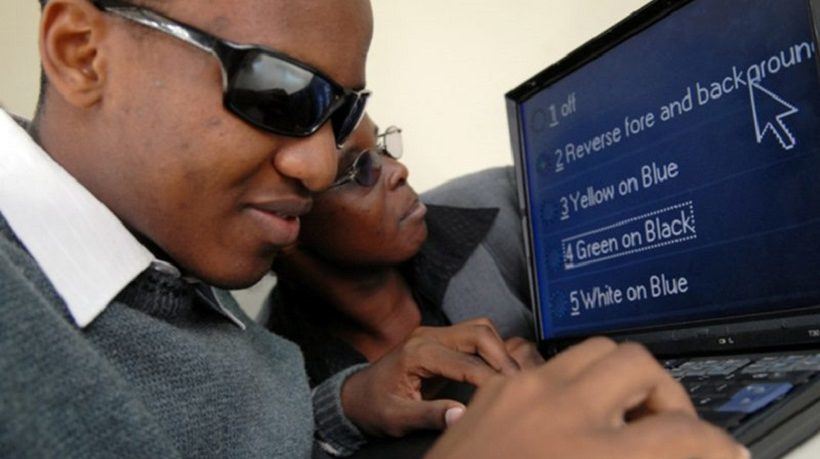How To Use eLearning To Support A Work Environment Of Diversity And Inclusion
We have been talking to a lot of prospects and clients who want their workplace to be a reflection of the world around them. They want to create a welcoming environment for those who are often excluded or overlooked. We have a huge untapped pool of talented, educated adults who have been traditionally sidelined because of a physical disability, such as vision and hearing loss, and limitations in mobility. There are also very capable, highly technical workers with learning disabilities such as Asperger’s syndrome or high-functioning autism. Over 43 million of these adults with disabilities remain outside of the workforce. This is a valuable resource which forward-thinking progressive employers have taken an active interest in and leverage by having them included in the workforce.
Consider these statistics:
- 56.7 million people (19% of Americans) have some form of disability.
- 53 million are adults of working age.
- 9.3 million (17.5%) of those adults are in the workforce.
- 43.7 million (82.5%) of those adults are unemployed.
So how do we optimize inclusion while maintaining workplace productivity and efficiency? How do we identify and recruit capable employees who are differently abled?
The answer comprises 3 parts:
- Build pipelines of diverse and differently-abled talent.
- Create eLearning courses and training content that are accessible to all.
- Emphasize mentoring and coaching.
1. Building Your Pipeline
A strong candidate pool makes for a strong workforce. Recruiting the right kind of talent from a specific group can pose quite a challenge. It is important to build a diverse and inclusive workforce intelligently, not by sacrificing quality or setting arbitrary quotas. The reality is that high-quality, diverse talent is out there, but you will have to take steps to find it.
The key to successfully identifying these candidates is advanced preparation. Companies should identify opportunities to engage with diverse talent on an ongoing basis. This will give you a pool of talent to draw from when the need arises to bring new people into the organization.
- Identify agencies that specialize in job training and/or job placement for workers with disabilities, such as Alternatives.com.
- Participate in activities sponsored by local and state vocational rehabilitation offices to fully understand the federal hiring process for persons with disabilities. Here is a link to a bay area agency.
- Market job openings to candidates with disabilities who are eligible for “non-competitive placement” under the Schedule A Hiring Authority of the United States Office of Personnel Management (OPM) via websites like Disability Job Exchange.
- Collaborate with self-advocacy groups where the differently-abled empower themselves and each other. For example, reach out to the Autistic Self Advocacy Network.
2. Creating Your Training Content
Remember that design drives accessibility. The ultimate goal is to enable a diverse range of people to access your content and to use it comfortably and effectively. If you are unsure where to begin, you can use the standard outlined in Section 508 of the Workforce Rehabilitation Act as a general guideline to eliminate barriers in information technology for people with disabilities.
You can deliver vibrant, content-rich eLearning training courses that are engaging for both your typically-abled and disabled workers. You can employ strategies such as closed captioning for the hearing impaired, audio descriptions of images for the visually impaired and incorporating assistive technologies for those with physical and dexterity limitation. Also, try to utilize formatting strategies and clear navigation options for those with learning disabilities.
Finally, do a pilot. Before you release your latest eLearning training course, have a few of your most trusted employees take it for a trial run. Let their feedback guide you to any course corrections that might be needed. We recommend that your pilot be comprised of employees of differing abilities.
3. Mentoring And Coaching
Peer-coaching and manager-mentoring are invaluable tools in a successful company. Coaching from experienced peers with the same job functions helps to ensure that your newly hired employees are comfortable in their work role and will help to identify any obstacles to their success. Mentoring from a manager serves to foster an environment of inclusivity by giving employees a feeling of belonging and offering them a sounding board to discuss sensitive issues. Additionally, providing access to leadership and training opportunities for all groups that have been historically under-represented in the organization (such as the disabled, women, and minorities) will ultimately ensure that diverse candidates are eligible and qualified for promotions.
Diversity and inclusion in the workplace can seem complex and intimidating with many factors to consider for managers and HR leaders. If your company hasn’t already begun a program of this nature, the best way to begin is to open a dialogue on the subject between managers and employees. You will find that this is an area that few people talk about but many, having disabled people in their own families, care deeply about and would eagerly support the initiative. To gain an understanding of how your current diversity and inclusion efforts are perceived by your workers, conduct a brief Employee Engagement Survey. You may find that opening your hiring practices to accommodate workers with disabilities will strengthen your organization and create a deeper connection to your community.









